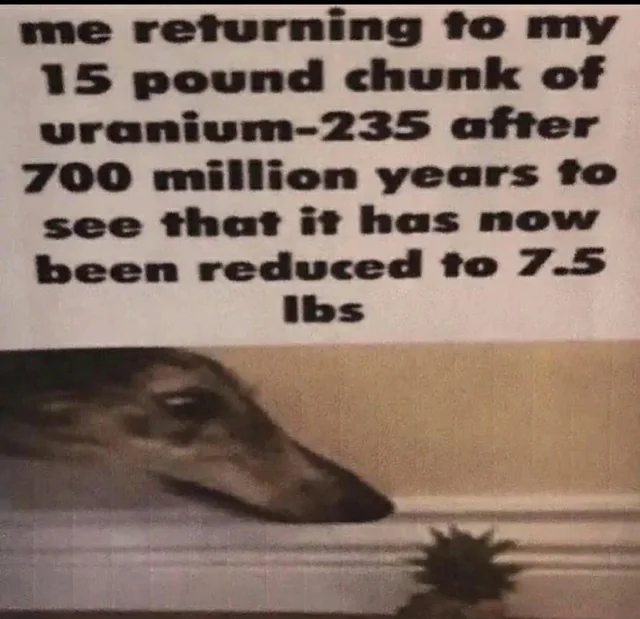this post was submitted on 04 Oct 2023
491 points (99.2% liked)
196
16817 readers
3146 users here now
Be sure to follow the rule before you head out.
Rule: You must post before you leave.
founded 2 years ago
MODERATORS
you are viewing a single comment's thread
view the rest of the comments
view the rest of the comments

It doesn't get destroyed, it just splits into smaller things. Decay chains contain a number of reactions, which involve emission of a particular "particle": alpha particle (helium nucleus), beta- particle (electron), beta+ particle (positron) or gamma particle (photon), accompanied by stuff like neutrinos and antineutrinos. Thus a radioactive sample "loses" mass and energy. You can also have nuclear fission, where a heavy nucleus splits into smaller nuclei.
This isn't the full scope of nuclear reactions (there's stuff like electron capture, proton/neutron emission, etc.), but it should explain the problem at hand.
Edit: obviously half-life doesn't mean after that time sample shrinks in half, it means half of the original isotope remains while half has decayed. There would be lead and unstable decay products in the sample still. Radioactive isotopes don't decay to nothing, they decay to stable isotopes.